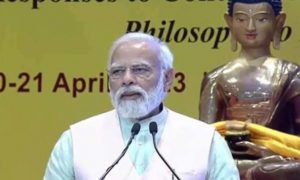The ending of the menstrual cycle indicates a woman’s estrogen levels are going down but the longer that you’re exposed to lower estrogen levels, the more your osteoporosis risk goes up. Check out these causes, symptoms and treatment of Postmenopausal Osteoporosis
Did you know osteoporosis is a common occurrence in postmenopausal women? It is imperative for each and every woman to embrace a healthy lifestyle and take care of her bones as not doing so can land you in trouble. Osteoporosis can be termed as a disease that tends to weaken bones and raise the chances of fractures.
In an interview with HT Lifestyle, Dr Anu Vij, Consultant Obstetrician and Gynaecologist at Medicover Hospitals in Navi Mumbai, explained, “Osteoporosis means “porous bone” as there is a loss of bone mass and strength. You will be shocked to know that this condition will progress without any symptoms or pain. A majority of times, this condition is detected late when the bones lead to painful fractures usually in the back or hips. Unfortunately, once you have a broken bone due to osteoporosis, you are at high risk of having another. This condition can take a toll on your overall well-being, and interfere with your daily routine. Furthermore, it can also reduce your quality of life.”
Stating that the exact cause behind it is unclear, she said, “During the ageing process, bone breakdown begins to outpace bone build-up, putting one at risk of gradual loss of bone mass. Once this loss of bone reaches a certain point then the woman is known to have osteoporosis. Moreover, around 50% of postmenopausal people will be detected to have osteoporosis, and menopause is the most common cause of osteoporosis.”
Decoding the link between menopause and osteoporosis, the health expert highlighted, “Menopause is not having menses. The ending of the menstrual cycle indicates a woman’s estrogen levels are going down. This is because their ovaries are unable to produce estrogen to stimulate the menstrual cycle. Estrogen is a hormone that plays a vital role in maintaining bone strength and slows bones from breaking down. Remember that the longer that you’re exposed to lower estrogen levels, the more your osteoporosis risk goes up.”
Read More: 7 Foods To Boost Brain Function
Talking about the factors leading to osteoporosis, Dr Anu Vij blamed heavy alcohol intake, cigarette smoking, family history and taking certain medicines as unfortunately, these medicines impact bone and cause bone loss. According to her, even rheumatoid arthritis, hyperparathyroidism and diabetes mellitus are some of the conditions that invite osteoporosis.
She revealed the symptoms of osteoporosis in postmenopausal women and said, “Osteoporosis is a “silent” disease because it often doesn’t cause symptoms until the condition has advanced but, the red flags of this condition are affected function, back pain, decreased mobility experiencing fractures (bone breaks) in your back, wrists, or hips experiencing changes in posture, such as kyphosis, or taking on a hunchback appearance, losing a noticeable amount of height.”
She shared that the diagnosis includes a (CT) scan or magnetic resonance imaging (MRI) to measure how or if osteoporosis has impacted the spine. Dr Anu Vij highlighted the treatment options for postmenopausal osteoporosis and said, “Estrogen therapy is a hormone replacement treatment that helps increase the body’s estrogen supply because the ovaries no longer produce as much estrogen. Taking calcium and vitamin D supplements will strengthen bone by encouraging the formation of new bone. Your doctor will decide the appropriate treatment for you.”
She concluded with the lifestyle changes to manage osteoporosis and suggested, “Opt for a diet loaded with calcium and vitamin D. Include calcium-containing foods like dairy products, almonds, edamame, tofu, orange juice, and cereal. Vitamin D-rich foods such as salmon, tuna, sardines, and egg yolks can also be eaten. Do weight-bearing exercises and resistance bands for stronger bones. Maintaining an optimum weight to keep your bones strong. Say NO to smoking and drinking. Try to stay hale and hearty throughout life.”





































